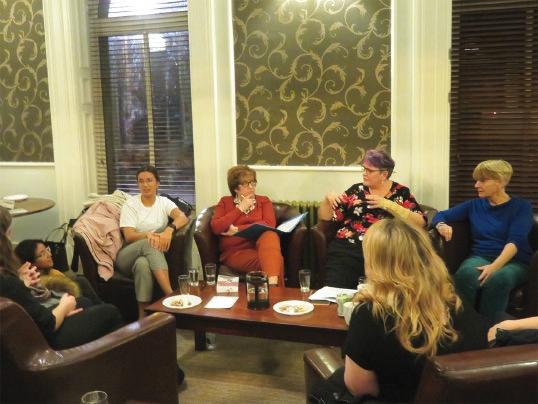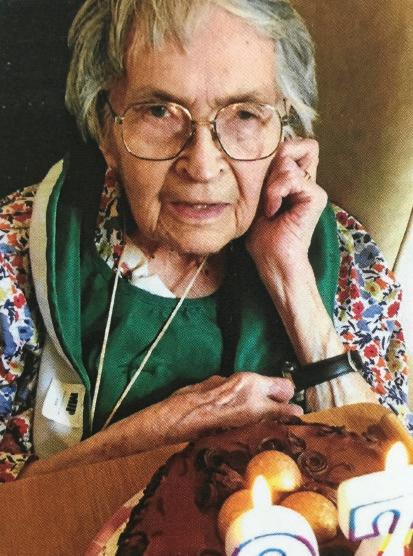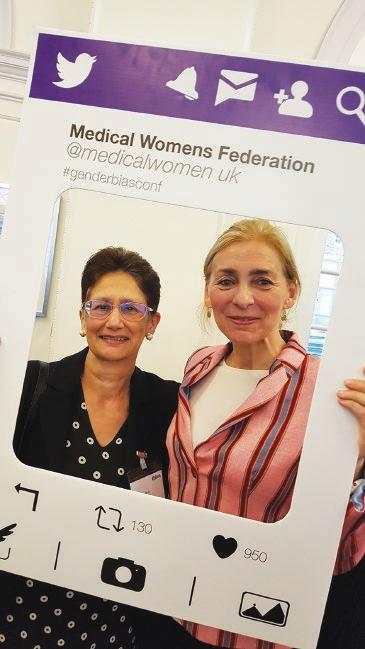
6 minute read
Spotlight on women’s health: racial disparities
Tackling racial disparities in maternal health: addressing and overcoming the current zeitgeist to effect change
Melanie Etti is a junior doctor with an interest in global health who is currently working on a study in Uganda focused on improving rates of maternal and neonatal sepsis. She hopes to pursue a career in Infectious Diseases and Medical Microbiology upon her return to the UK.
In November 2018, the UK and Ireland Confidential Enquiry into Maternal Deaths and Morbidity between 2014-16 was published. Here it was reported that 545 women in the UK and Ireland died during or within a year of their pregnancy during this time frame. Black women were identified as being five times more likely to die than white women and Asian women carried a two times greater risk. 1 More recently, a meta-analysis published in 2019 looking at risks associated with stillbirth in 15 million pregnancies of women across the United Kingdom (UK) and United States (US) found that black women are twice as likely than white women to deliver a stillborn baby at all gestational ages, independent of all other risk factors. 2 While these statistics are shocking, they represent the continuation of a legacy of poorer healthcare outcomes for black and minority ethnic (BME) people in the UK, as was outlined in the Acheson enquiry into Inequalities in Health more than 20 years ago. 3 But why does this remain the case? Despite the apparent simplicity of this question, the answer is difficult to unravel in its complexity, however it appears to be rooted in the unconscious bias and systemic racism that continues to permeate the culture of many Western healthcare systems to this day. Examples of such racism are not difficult to find and not as covert as many might think. In 2017, London-based textbook publisher, Pearson Education, issued a public apology after excerpts from their textbook ‘Nursing: A Concept-Based Approach to Learning’ began to circulate on social media. 4 In a section describing cultural differences in responses to pain, a number of harmful stereotypes were listed relating to various racial and religious groups, among which were the statements “Blacks often report higher pain intensity than other cultures” and “Muslims must endure pain as a sign of faith in return for forgiveness and mercy”, with the understanding that one person can belong to both groups clearly lacking in this instance. Such baseless assertions as to the monolithic behaviour of people of different cultural backgrounds are at best, an inadvertent declaration of ignorance, and at worst, permission for the continued ‘othering’ of BME people in a way that allows practice to deviate from patientcentred care. This section was subsequently omitted in more recently published versions of the textbook, but it is disappointing that it took a public outcry for this course of action to be taken. Toxic beliefs such as those mentioned previously only act to further reinforce the shortcomings in healthcare provision for pregnant BME women and new mothers, for whom such inadequacies can have a catastrophic outcome. One notable figure who spoke out about her poor experience following the delivery of her daughter just over two years ago was tennis player, Serena Williams. Shortly after the birth of her child via caesarean section, Williams, who had been diagnosed a pulmonary embolism 15 years prior, developed sudden onset shortness of breath. 5 She describes relaying her symptoms to her nurse, only to be told that her pain medication was likely making her confused. Only when she challenged this were further investigations arranged. A subsequent CT pulmonary angiogram revealed multiple pulmonary emboli. This account is a stark reminder that this is an issue that transcends socio-economic status, affecting women of colour at both ends of the wealth gap. Unfortunately, we know that those who view themselves to be in a position of less power have greater difficulty asserting themselves in similar circumstances, making such dismissals all the more dangerous. Research conducted by the Nuffield Department of Population Health at the University of Oxford between 2010 and 2018 led to the outlining of a number of key themes relating to BME women’s experiences of maternity care in the UK. 6 Amongst the key experiential themes identified were ‘please believe me’ and ‘choices denied’, with ‘stereotyping’ also emerging as a major theme within this research. Of the women surveyed, fewer BME women reported feeling that they were treated with kindness, nor felt sufficiently involved in decisions relating to their care. In addition to identifying these differences in self-reported patient experience, a number of key differences in access to maternal healthcare between racial groups were also identified; BME women were found to have had fewer antenatal scans and less screening than white pregnant women and had fewer home visits from health visitors in the postnatal period. There were also significant disparities in the birthing experience between racial groups. BME women were less likely to be offered pain relief during labour and Black African women in particular were more likely to deliver via emergency caesarean section than any other racial group surveyed, a statistic that cannot be explained by varying physiology alone. In the face of these chilling facts, it is evident that little has changed since the Acheson enquiry. While confidential enquiry provides

the first vital steps to identifying where things are going wrong, further work is required to establish how and why. This need is both essential and urgent, as only then can we begin to enact policies and change practice in a way that has a material effect on healthcare outcomes for BME women. One important aspect of this work should be the continued engagement of BME women in order to truly understand their lived experiences, re-enfranchising women who may have felt ignored and suffered as a consequence. Further work should also be done to understand and examine the feelings and attitudes of healthcare professionals to determine what bearing this has on why the provision of maternal healthcare for BME women continues to fall short. The outcome of this work may be uncomfortable, and may reveal complicity throughout the NHS, but change cannot occur without acknowledgement and acceptance. The desired outcome is change that results in equitable treatment strategies that improve the chance of survival for all women throughout and after their pregnancies, with the additional difficulties that befall BME women being appropriately accounted and adjusted for along the way.
References
1 Bunch, K. and Knight, M. 2018. ‘Maternal Mortality in the UK 2014-16: Surveillance and Epidemiology’, in Knight M, Bunch, K., Tuffnell, D., Jayakody, H., Shakespeare, J., Kotnis, R., Kenyon, S., Kurinczuk, J.J. (Eds.) on behalf of MBRRACE-UK. Saving Lives, Improving Mothers’ Care - Lessons learned to inform maternity care from the UK and Ireland Confidential Enquiries into Maternal Deaths and Morbidity 2014-16. Oxford: National Perinatal Epidemiology Unit, University of Oxford: p5-22 2 Muglu, J., Rather, H, Arroyo-Manzano D. et al. 2019. ‘Risks of stillbirth and neonatal death with advancing gestation at term: A systematic review and meta-analysis of cohort studies of 15 million pregnancies’, PLOS Medicine. 16(7): e1002838
3 Acheson, D. 1998. Independent Inquiries into Inequalities in Health. The Stationery Office, London
4 Sini, R. 2017. ‘Publisher apologises for ‘racist’ text in medical book’. BBC News. 20th October [accessed 1st March 2020] Available from: https://www.bbc.com/news/blogs-trending-41692593
5 Haskell, R. 2018. ‘Serena Williams on Motherhood, Marriage and Making Her Comeback’. Vogue. 10th January [accessed on 1st March 2020] Available from: http://bit.ly/3d9Vx8U
6 National Perinatal Epidemiology Unit. c2018. ‘Policy Research Unit in Maternal Health & Care (2010-2018) - Women’s outcomes and experiences of care’ [accessed 2nd March 2020]. Available from: http://bit.ly/2ISM87A










